Filter by
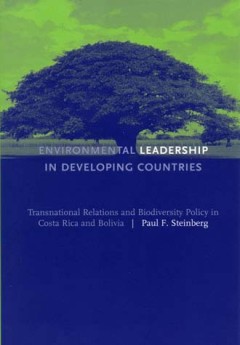
Environmental Leadership in Developing Countries: Transnational Relations and…
The first in-depth study of the politics of environmental policy reform in developing countries, with emphasis on Costa Rica and Bolivia.OCLC-licensed vendor bibliographic record.
- Edition
- -
- ISBN/ISSN
- 9780262284271
- Collation
- 1 online resource (xv, 280 pages) :illustrations, maps.
- Series Title
- -
- Call Number
- -
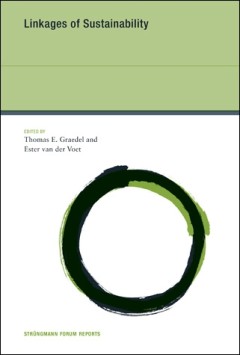
Linkages of sustainability
In this book, experts discuss the multiple components of sustainability, the constraints imposed by their linkages, and the necessity of taking a comprehensive view.OCLC-licensed vendor bibliographic record.
- Edition
- -
- ISBN/ISSN
- 9780262258845
- Collation
- 1 online resource (xiii, 532 pages) :illustrations (some color), maps (some color).
- Series Title
- -
- Call Number
- -

Living through the end of nature :the future of American environmentalism
"Environmentalists have always worked to protect the wildness of nature but now must find a new direction. We have so tamed, colonized, and contaminated the natural world that safeguarding it from humans is no longer an option. Humanity's imprint is now every where and all efforts to "preserve" nature require extensive human intervention. At the same time, we are repeatedly told that there is n…
- Edition
- -
- ISBN/ISSN
- 9780262266000
- Collation
- 1 online resource (xii, 252 pages) :illustrations
- Series Title
- -
- Call Number
- -
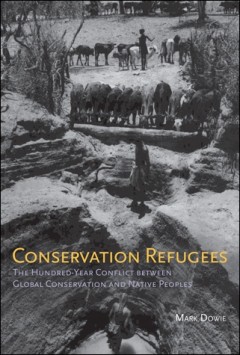
Conservation refugees The Hundred-Year Conflict between Global Conservation a…
How native people--from the Miwoks of Yosemite to the Maasai of eastern Africa--have been displaced from their lands in the name of conservation. Since 1900, more than 108,000 officially protected conservation areas have been established worldwide, largely at the urging of five international conservation organizations. About half of these areas were occupied or regularly used by indigenous peop…
- Edition
- -
- ISBN/ISSN
- -
- Collation
- 1 online resource (376 pages).
- Series Title
- -
- Call Number
- -

Forgotten values :the World Bank and environmental partnerships
An examination of the conflict between values and bureaucracy in World Bank biodiversity partnerships that sheds light on this model of global environmental governance. Multi-stakeholder partnerships have become an increasingly common form of global governance. Partnerships, usually between international organizations (IOs) or state agencies and such private actors as NGOs, businesses, and acad…
- Edition
- -
- ISBN/ISSN
- 9780262359054
- Collation
- 1 online resource
- Series Title
- -
- Call Number
- -
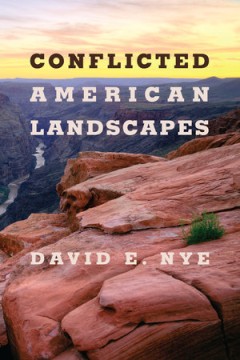
Conflicted American landscapes
"Traces six contradictory American ideologies of nature from their emergence in the late eighteenth century to the present to explore how inconsistent conceptions of nature lead to conflict"--OCLC-licensed vendor bibliographic record.
- Edition
- -
- ISBN/ISSN
- 0262363097
- Collation
- 1 online resource.
- Series Title
- -
- Call Number
- -

Mnemonic ecologies :memory and nature conservation along the former iron curtain
"Examination of the relationships among conservation, restoration, novel ecosystems, collective trauma, and memorialization as illustrated by the Green Belt between the former East and West Germanies"--OCLC-licensed vendor bibliographic record.
- Edition
- -
- ISBN/ISSN
- 9780262375245
- Collation
- 1 online resource.
- Series Title
- -
- Call Number
- -
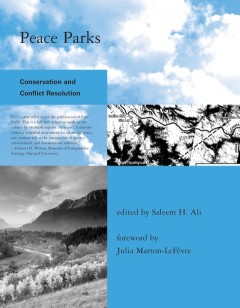
Peace parks :conservation and conflict resolution
An analysis of the potential for environmental cooperation in multijurisdictional conservation zones to contribute to political conflict resolution; includes case studies of existing parks and proposals for new ones.Although the 2004 Nobel Peace Prize was awarded to a Kenyan environmentalist, few have considered whether environmental conservation can contribute to peace-building in conflict zon…
- Edition
- -
- ISBN/ISSN
- 9780262266970
- Collation
- 1 online resource (xx, 406 pages) :illustrations, maps.
- Series Title
- -
- Call Number
- -
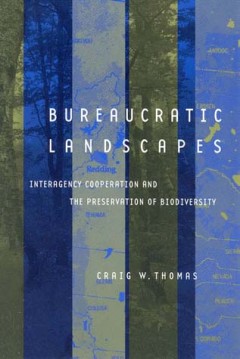
Bureaucratic landscapes :interagency cooperation and the preservation of biod…
Political scientists have long been concerned about the tension between institutional fragmentation and policy coordination in the U.S. bureaucracy. The literature is rife with examples of agencies competing with each other or asserting their independence, while cooperation is relatively rare. This is of particular importance in policy areas such as biodiversity, where species, habitats, and ec…
- Edition
- -
- ISBN/ISSN
- 9780262284882
- Collation
- 1 online resource (xxii, 353 pages).
- Series Title
- -
- Call Number
- -
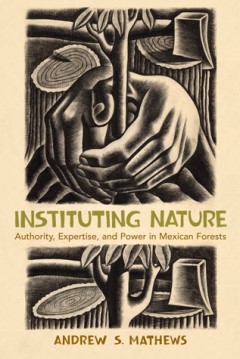
Instituting Nature: Authority, Expertise, and Power in Mexican Forests
Here, Mathews describes Mexico's efforts over the past hundred years to manage its forests through forestry science and biodiversity conservation. He shows that transparent knowledge was produced by encounters between the relatively weak forestry bureaucracy and the indigenous people who manage and own the pine forests of Mexico.OCLC-licensed vendor bibliographic record.
- Edition
- -
- ISBN/ISSN
- 9780262298537
- Collation
- 1 online resource (xii, 304 pages) :illustrations, maps.
- Series Title
- -
- Call Number
- -
 Computer Science, Information & General Works
Computer Science, Information & General Works  Philosophy & Psychology
Philosophy & Psychology  Religion
Religion  Social Sciences
Social Sciences  Language
Language  Pure Science
Pure Science  Applied Sciences
Applied Sciences  Art & Recreation
Art & Recreation  Literature
Literature  History & Geography
History & Geography